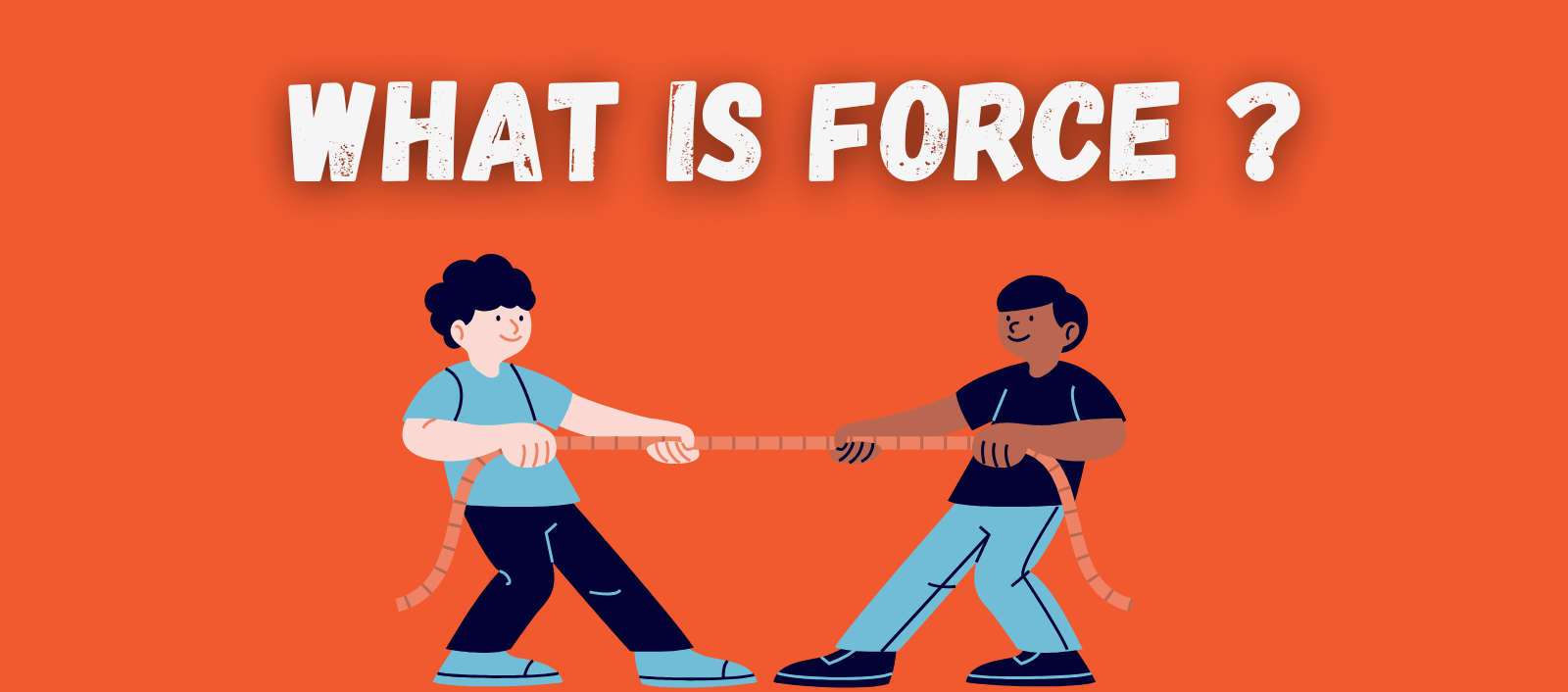Want to know what makes things move, stop, or change direction? Start with understanding force.
This guide explains force using simple ideas from Newton’s laws. You will learn what it means, how we measure it, and the types of force we use every day.
Now let’s explore the meaning of force and see how it shapes everything around us.
What is Force?
"Force is a push or pull that changes an object's motion, direction, or shape."
SI Unit of force,
It is measured in Newtons (N).
everyday examples of forces
Forces are all around us, shaping how we interact with objects daily. Here are three simple examples:
Pushing a Door
When you push a door to open it, you’re applying a force. The harder you push, the faster the door moves. This is a direct example of a contact force.

Lifting a Bag
When you lift a shopping bag, you’re working against gravity. Gravity pulls the bag down, while your muscles apply an upward force. This balance determines whether the bag moves.

Kicking a Ball
Kicking a football involves applying a force with your foot. This contact force changes the ball’s motion and direction, sending it flying across the field.

Vector Nature of Force
Force has a vector nature, meaning it has both magnitude and direction.
The magnitude indicates the strength of the force, while the direction shows where it’s applied.
For example,
Pushing a box to the right applies force in a specific direction. Combining multiple forces requires vector addition. If forces act in the same direction, they add up. If they act oppositely, they subtract.
This vector property is crucial in determining an object’s motion. Engineers and physicists use it to design structures and understand motion.
Always remember, force is not just a number but a directional influence.
Types of Forces
Gravitational Force:
Pulls objects towards a massive body like Earth. It gives objects their weight.
Frictional Force:
Opposes motion between two surfaces in contact. It prevents slipping and helps with movement.
Tension Force:
Acts through ropes or strings when pulled tight. It keeps objects suspended or connected.
Normal Force:
A support force exerted by surfaces, acting perpendicular to the object in contact.
Applied Force:
A push or pull exerted by a person or object to move another object.
Electromagnetic Force:
Acts between charged particles, responsible for electric and magnetic interactions.
Spring Force:
Exerted by a stretched or compressed spring, restoring its shape.
Air Resistance:
A type of frictional force acting against objects moving through air.
Learn more about the different Types of Forces
What is the Relationship Between Force and Acceleration?
Newton’s Second Law of Motion states that force equals mass times acceleration (F = ma).
- Higher force results in greater acceleration.
- Larger mass requires more force to accelerate.
This principle is used in sports, engineering, and transport design.
Why Choose Tutorhelpme Physics and Maths Tutor
Personalised Learning Plans:
Lessons tailored to match your strengths and address your challenges.
Expert Tutors:
Highly qualified professionals physics and maths tutor with extensive experience in physics and maths.
Clear Explanations:
Simple, step-by-step teaching to make even tough topics easy to understand.
Comprehensive Exam Preparation:
Focused sessions to boost your performance in tests and exams.
Interactive Teaching Methods:
Engaging approaches that make learning physics and maths enjoyable.
Flexible Scheduling:
Choose session times that suit your availability and routine.
Affordable Rates:
High-quality tutoring without breaking your budget.
Progress Tracking:
Regular updates to monitor your improvement and stay on track.
Supportive Environment:
Encouraging guidance to build your confidence and skills.
Proven Success:
Countless students achieve better grades and deeper understanding with TutorHelpMe.
FAQ’s
How does force apply to driving?
Force is crucial in vehicle movement and braking. UK roads experience wet and icy conditions, so frictional force between tyres and roads is essential for safe driving.
What role does force play in sports?
From football to rugby, force determines speed, impact, and ball movement. Players adjust force and direction to control passes, kicks, and tackles effectively.
Why is gravitational force important in roller coasters?
UK theme parks like Alton Towers use gravity and applied forces to create thrilling rides. The downward force on a roller coaster increases speed, while friction and air resistance help control motion.
How do planes overcome gravitational force?
Aircraft at London Heathrow Airport rely on lift force from wings to counteract gravity. Engines provide thrust, while air resistance and weight must be carefully balanced for safe flights.
What is the difference between contact and non-contact forces?
Contact forces: Require direct contact (e.g., friction, tension).
Non-contact forces: Act at a distance (e.g., gravity, magnetism).
Why do objects slow down if no force is acting on them?
Due to frictional force, most objects don’t keep moving forever. On ice or smooth surfaces, friction is lower, so objects move for longer before stopping.
How does force impact public transport in the UK?
Trains, buses, and trams rely on engine force, braking force, and friction. Engineers optimise designs to reduce fuel consumption and improve efficiency.

